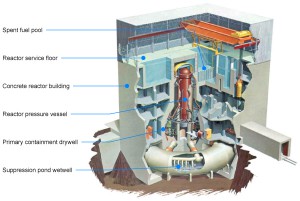Demand Response is when energy users are reimbursed or paid to reduce their consumption. I believe this is a great system to use for any type of energy consumer from small households to large corporations. This could be a turning point and another added bonus to decreasing our environmental impact. Enernoc is a great provider of demand response that is taking advantage and publicizing this new idea. Companies that Enernoc help commercial, industrial, and institutional businesses to find ways to reduce their impact and receive benefits without affecting operations, comfort or quality of the business. Enernoc’s website states, “Demand response allows energy users of all kinds to act as “virtual power plants,” adding stability to the grid by voluntarily lowering their demand for electricity.” This is a great program that reduces humanity’s ecological footprint, which can help our environment and businesses now, as well as in the future.

So how is demand response measured? Mainly turning off lighting, air conditioning, certain pumps, other non-essential equipment, and switching to back up generation dignify the conservation process. Each demand response reduction program is customized to the specific business for easier capability within the program. As less demand on power grids are created demand response companies such as Enernoc, Comverg, and Con Edison pay for the energy that is not used. I have constructed a table of information I found from www.epa.gov “Coordination of Energy Efficiency and Demand Response,” which shows various types of demand response programs and price options.
| Price Options | Incentive or Event-Based Options |
| TOU rates: Rates with fixed price blocksthat differ by time of day.
|
Direct load control: Customers receiveincentive payments for allowing the utility a
degree of control over certain equipment.
|
| RTP: Rates that vary continually (typicallyhourly) in response to wholesale market
prices.
|
Emergency demand response programs:Customers receive incentive payments for
load reductions when needed to ensure reliability.
|
| CPP: Rates that include a pre-specified,extra-high rate that is triggered by the
utility and is in effect for a limited number of hours. |
Demand bidding/buyback programs:Customers offer bids to curtail load when
wholesale market prices are high.
|
| Capacity market programs: Customersreceive incentive payments for providing
load reductions as substitutes for system capacity.
|
|
| Interruptible/curtailable: Customersreceive a discounted rate for agreeing to
reduce load on request.b
|
|
| Ancillary services market programs:Customers receive payments from a grid
operator for committing to curtail load when needed to support operation of the electric grid (i.e., ancillary services).c
|
CPP = critical peak pricing; RTP = real-time pricing; TOU = time of use.
As demand response programs are fairly new they are not yet extremely popular in every area of the world. The leading market is America with European and Eastern Asian programs developing quickly. As this industry develops I believe it will only be a matter of time before almost every country is starting these programs. Naviganttrees.com states “This market is projected to experience a robust compound annual growth (CAGR) rate of 37% to become a multi-billion market by 2016.” Demand response is a great way that everyone can benefit. While companies are being paid to be sustainable the environment and our energy sources can be saved as well.
http://www.pge.com/mybusiness/energysavingsrebates/demandresponse/
http://www.pge.com/mybusiness/energysavingsrebates/analyzer/integrated/
http://www.epa.gov/cleanenergy/documents/suca/ee_and_dr.pdf
http://www.navigantresearch.com/research/demand-response
http://www.enernoc.com/our-resources/term-pages/704-what-is-demand-response


